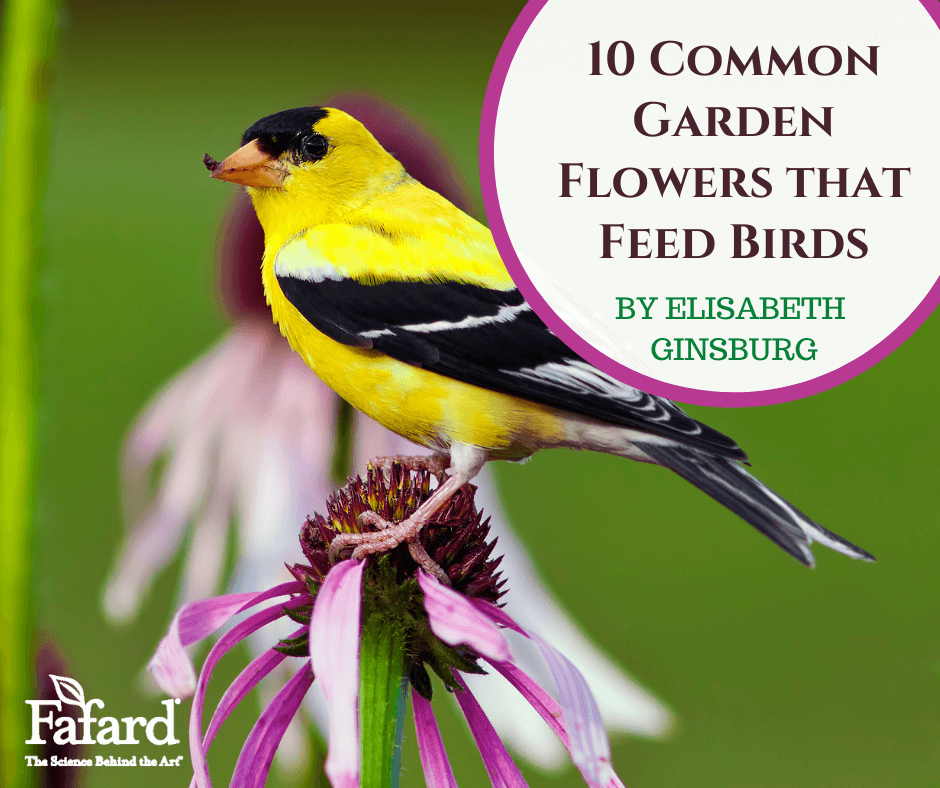
Birds–chirping, whistling, and singing—are integral contributors to the daily symphony of garden sounds. Their presence is also a sign of a healthy ecosystem. Attract them by using the right combination of flowering plants and focusing on a succession of blooms and seeds. The end result will be a beautiful landscape and a smorgasbord for birds.
The majority of bird-friendly blooms need sunny space, though a few, like allium and black-eyed Susan, can flourish in light shade. Some species will thrive in the leanest soil, while others prefer a growing medium enriched with organic material like Fafard Premium Natural & Organic Compost.
Zinnias, cosmos, marigolds and other prolific annuals are “cut and come again” flowers, producing fresh flowers over and over again after deadheading or cutting. In fact, the biggest dilemma for bird and bloom-loving gardeners may be whether to enjoy cut flowers or let them set seeds for hungry birds. When in doubt, plant enough for both uses and refrain from deadheading at the end of the gardening season.
The ten flowering plants below are among the best at providing beauty, ease of culture, and food for avian visitors.
Spring Flowers for Birds
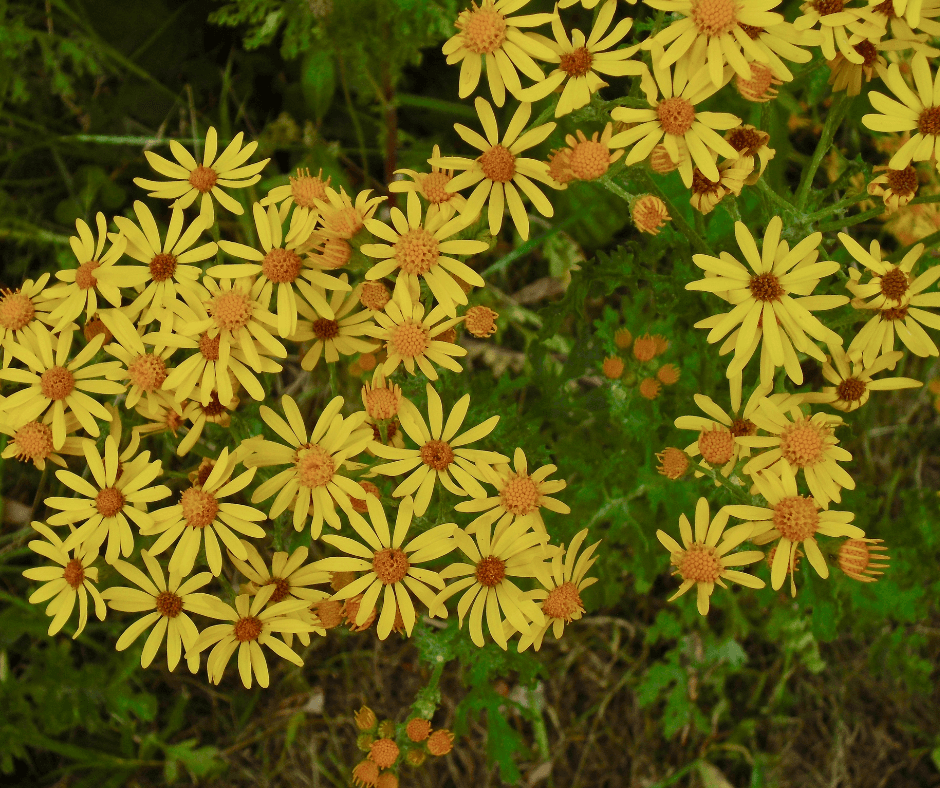
Golden Groundsel (Packera aurea, Zones 3-9): The native golden-yellow flowers of golden groundsel are repellant to troublesome garden critters like deer and rabbits, but magnetic for pollinators and birds. Their golden-yellow clusters of daisies attract lots of pollinators (some of which birds eat) and brighten partially sunny to shaded beds and look great in woodland gardens. Flowering may start in mid-spring and continue to late spring. Leave the fluffy white seed heads for the birds to enjoy! Plants may spread, so give them space to move.
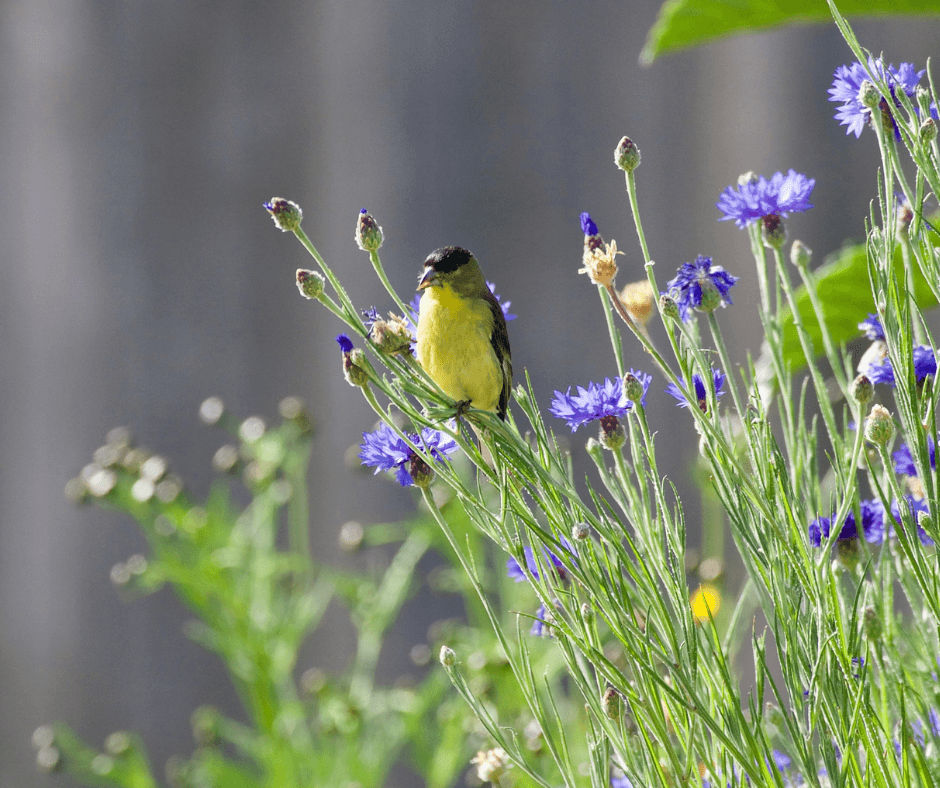
Cornflower (Centaurea cyanus): Annual cornflower, sometimes known as ‘bachelor buttons”, is an old-fashioned annual that blooms from May through July. The most common cornflower color is bright blue, but some varieties may also sport blue-purple, dark purple, white or pink flowers. Gardeners with poor soil can succeed with these bird-friendly blooms because they prefer lean conditions. Like other annuals, cornflowers will respond to cutting by producing more blooms. From a bird’s perspective, the sooner the flowers go to seed the better, so make sure to let that happen. The seed that the birds leave behind or drop will produce a new crop the following year.
Summer Flowers for Birds
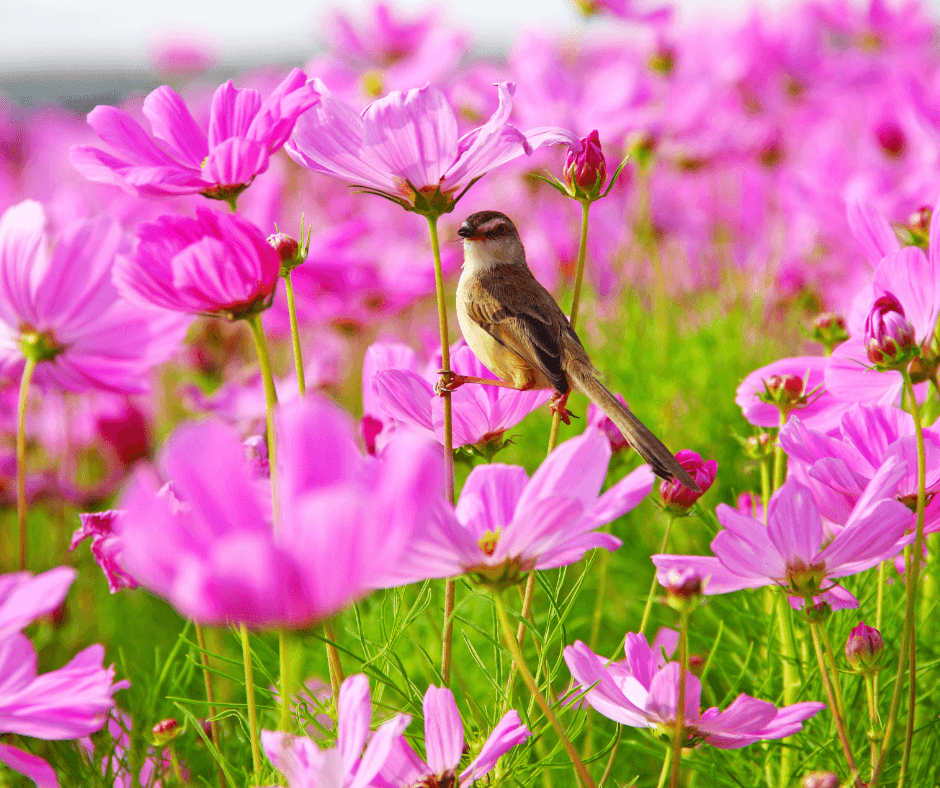
Common Cosmos (Cosmos bipinnatus): Blooming from the beginning of summer through frost, this annual is among the most cheerful members of the daisy family or Asteraceae (formerly Compositae). The longtime garden favorite bears familiar saucer-shaped flowers with white, pink, or rose petals surrounding golden centers. Some varieties, like those in the Double Click series, feature double blooms. The leaves are fern-like, accenting slender stems that may be anywhere from 1 to 4 feet tall. Like bachelor buttons, cosmos favor lean soil and good drainage. For color variation, try Cosmos sulphureus, with yellow, orange, or orange-red petals. Birds will have no trouble finding these tall beauties, which rise between 2 and 6 feet.

Zinnias (Zinnia species and hybrids): The world of annual zinnias is wide, encompassing varieties in just about every color except for brown and blue. Heights range from ground-hugging (6 inches) to 4 feet tall. Some of the most popular are tall zinnias (Zinnia elegans). All zinnias bear bright, daisy-like flowers, borne on somewhat coarse, hairy stems adorned with elongated green leaves. Pinching back the stems of young zinnia plants encourages branching, making more flowers for you and the birds. Zinnias will also bloom from early summer through frost but are sometimes prone to powdery mildew, a fungal disease. Avoid crowding the plants, as good air circulation discourages powdery mildew.
Coneflowers: Once upon a time, if you wanted a perennial coneflower (Echinacea spp.), your options were limited to the lovely blooms of purple coneflower (Echinacea purpurea). Now perennial coneflowers have become the darlings of the horticultural world and choices abound. Petal colors range from white, like the lovely ‘White Swan’, through a range of yellows, peach, pink, orange, and red, with bi-colors, like the fetching ‘Green Twister’ thrown in for good measure. Many of the newer coneflowers are also fragrant, an added plus. The one thing that they all have in common is large, cone-shaped centers filled with seeds. Goldfinches, in particular, love them.
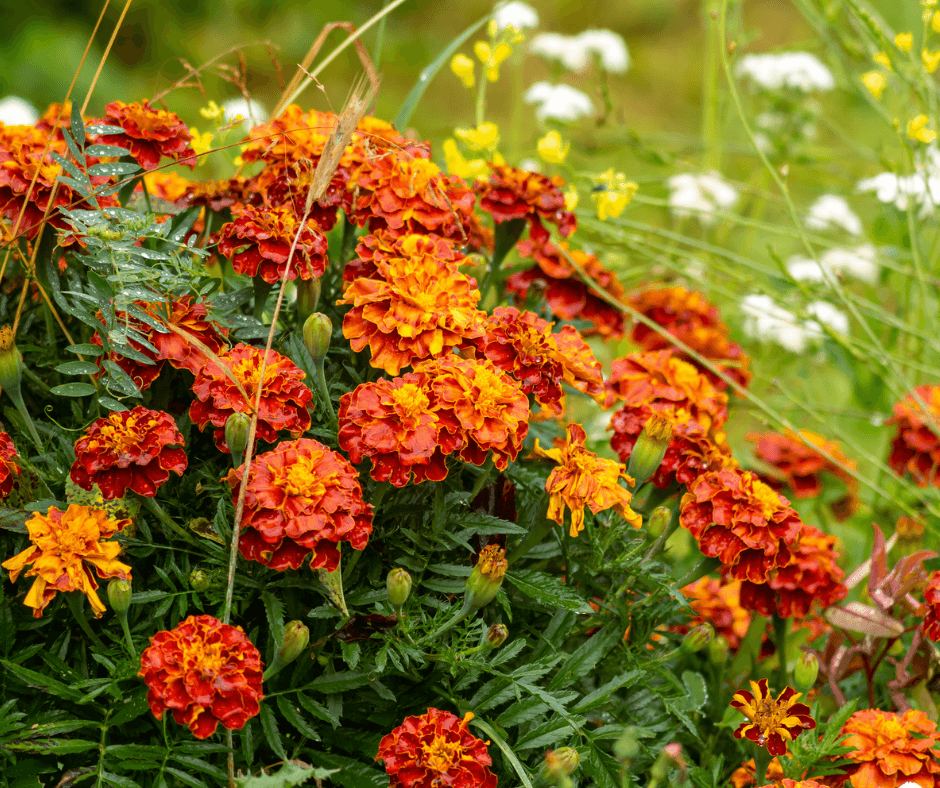
Marigolds: Annual marigolds (Tagetes spp.) are easy to grow and, tolerant of a range of conditions. Tall types, usually varieties of Tagetes erecta or African marigold, may reach a height of up to 4 feet tall, with large flower heads of cream, yellow, or yellow-orange petals. Blooming through the summer, both flowers and stems are aromatic and quite effective at repelling deer and other garden pests. Low-growing French marigolds (Tagetes patula) have all the virtues of their taller relations, but top out at 6 to 12 inches—perfect for containers, small spaces, and border edgings. When flowerheads are left intact for bird consumption, marigolds will self-seed readily.
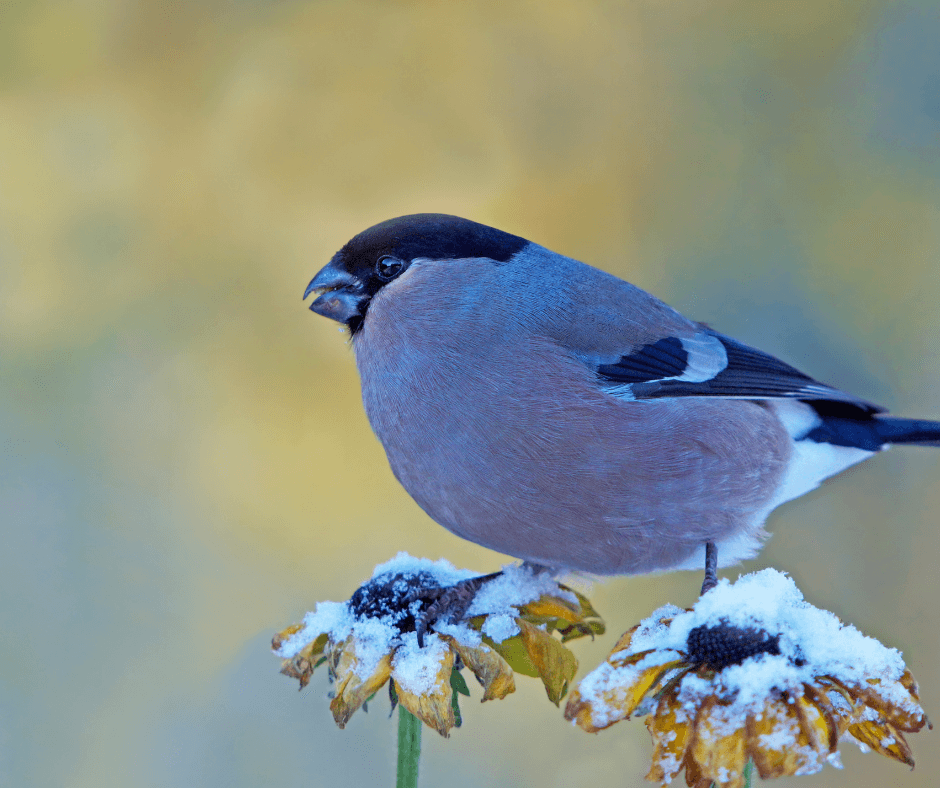
Black-Eyed Susans: An old-time favorite, black-eyed Susan (Rudbeckia spp.) flowers from mid to late summer. Native to North America, the plants may be biennial or perennial, but all feature prominent seed-filled cones that attract birds, especially finches and chickadees. One of the most popular garden “Susans” is Rudbeckia fulgida var. sullivantii ‘Goldsturm’, a reliable perennial that is widely available in garden centers and features some of the largest flowers. In general, black-eyed Susans can flourish in a wide variety of soil conditions and may even tolerate light shade.
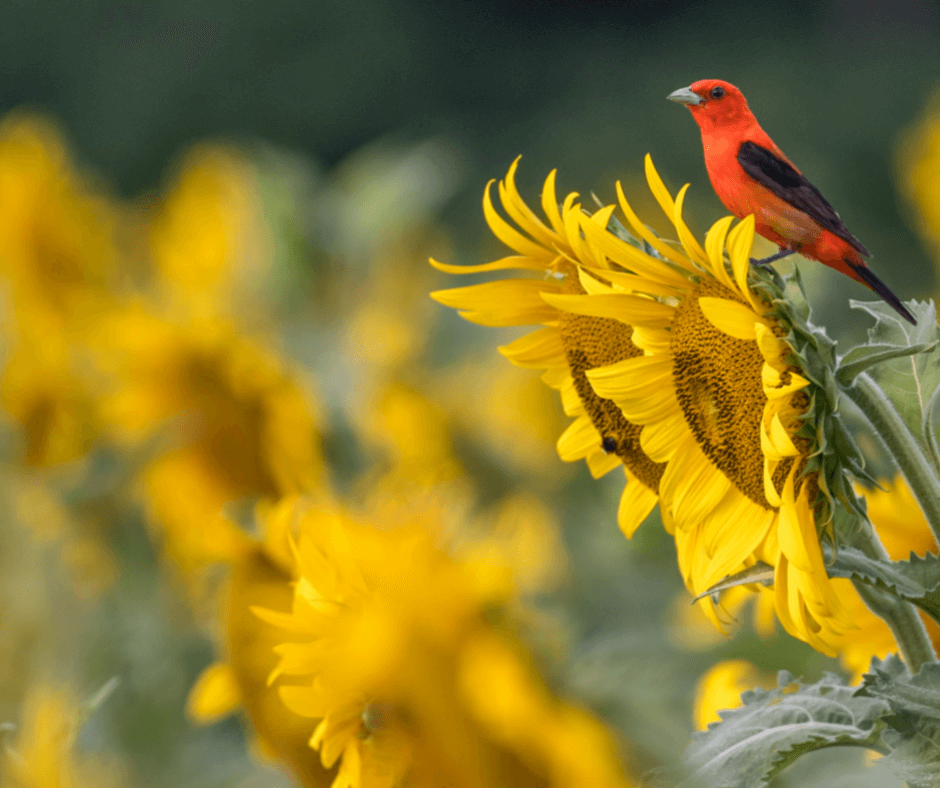
Annual Sunflowers: It is hard not to love annual sunflowers (Helianthus annuus), which are held in high esteem by humans, mammals, and birds. With broad, open flower faces and statuesque profiles, drought and heat-tolerant sunflowers, are also among the easiest plants to grow from seed. Breeders have worked hard to expand the range of available sizes and colors. Petals can be cream, shades of yellow, gold, orange, or russet, with bicolors popping up on the market every year. All have seed-filled centers. The big leaves may look ragged by summer’s end, but the flowerheads more than make up for that. Container gardeners do not have to miss out on the flowers, or the birds, because shorter varieties like ‘Little Becky” topping out at about 3 feet.
Autumn Finale
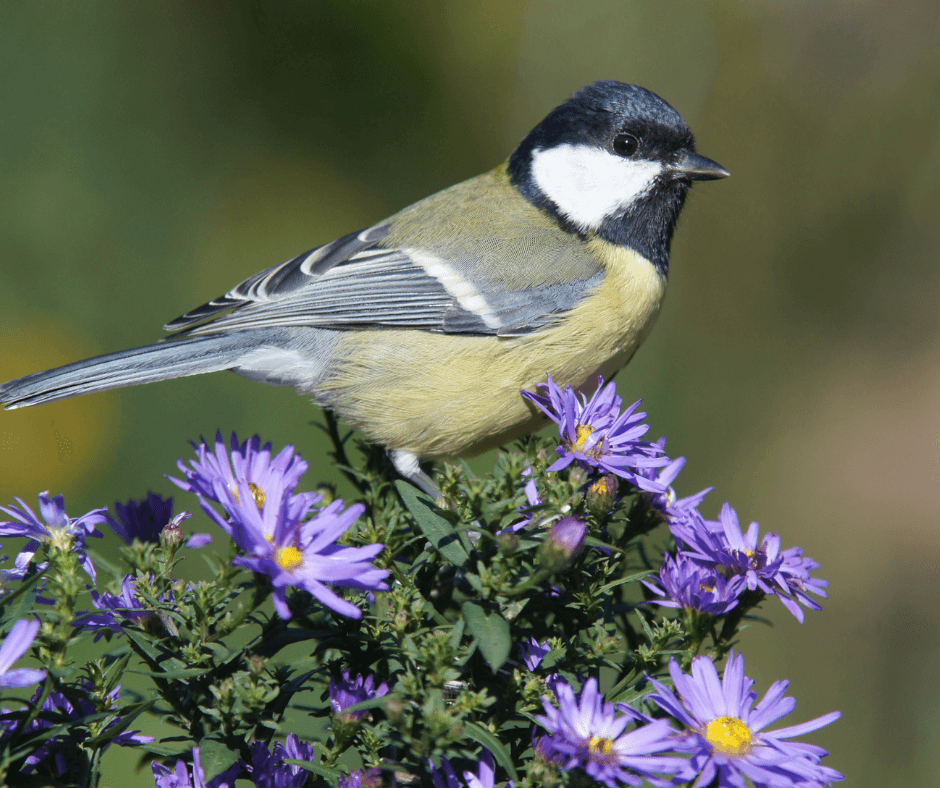
Asters: Perennial asters (Symphyotrichum spp., Eurybia spp. and Aster spp.) are no longer grouped under one species name, but they all feature daisy-like blooms in shades ranging from white through a host of pinks and roses to blues and blue-purples. For visual impact, you can’t beat traditional New England asters (Symphyotrichum novae-angliae). Upright and leafy, they may grow up to 6 feet tall, but can also be kept shorter with judicious pruning earlier in the growing season. Shorter asters, like the Woods series (‘Purple’, ‘Blue’ and ‘Pink’) have the same winsome flowers beloved of both people and birds but feature shorter stature (up to 18 inches). Butterflies relish the flowers’ nectar and birds feast on the autumn seeds.

Perennial Sunflowers: Drought-tolerant and versatile, sedums have really caught on with gardeners. Whether you choose tall varieties like the much-loved ‘Autumn Joy’ or shorter ones, like ‘Wildfire’, sedums feature flowerheads of small, star-shaped blooms that draw butterflies. Hanging around throughout fall, when other flowering plants have long since given up, sedums attract birds like finches with their plump seedheads. If you can, avoid cutting back sedums until spring clean-up.
Many of these garden flowers naturally self-sow from year to year, so allow a few seedlings to provide more bird food and beauty to future gardens.
